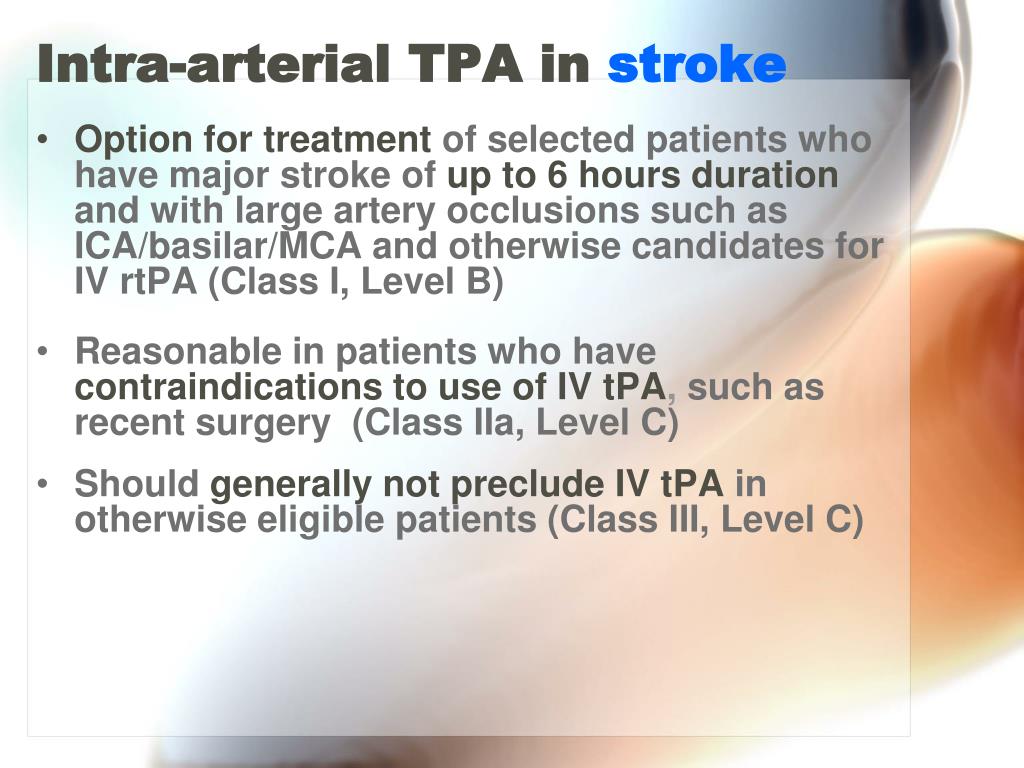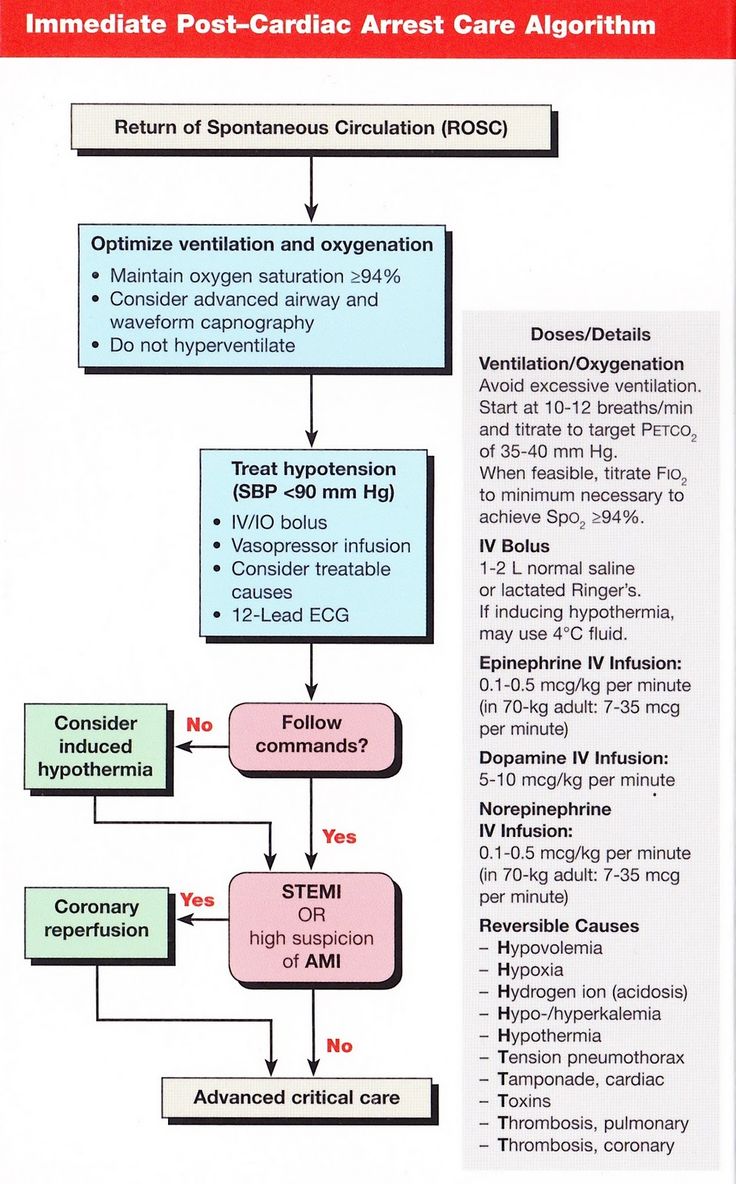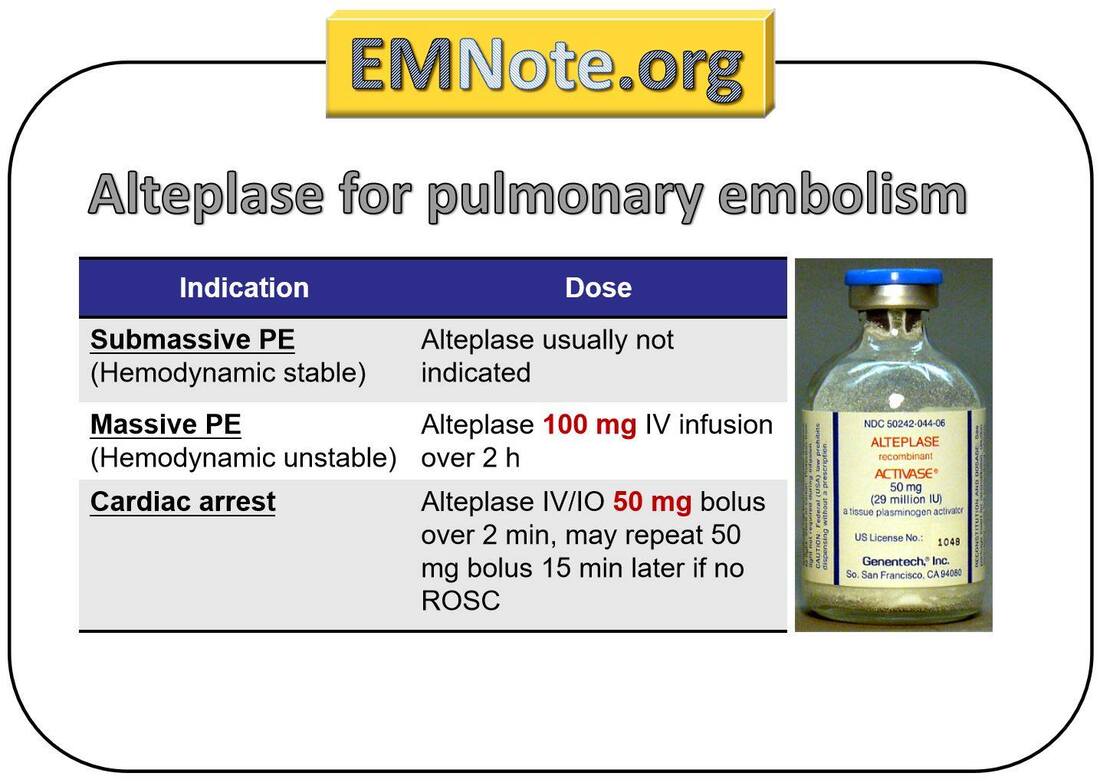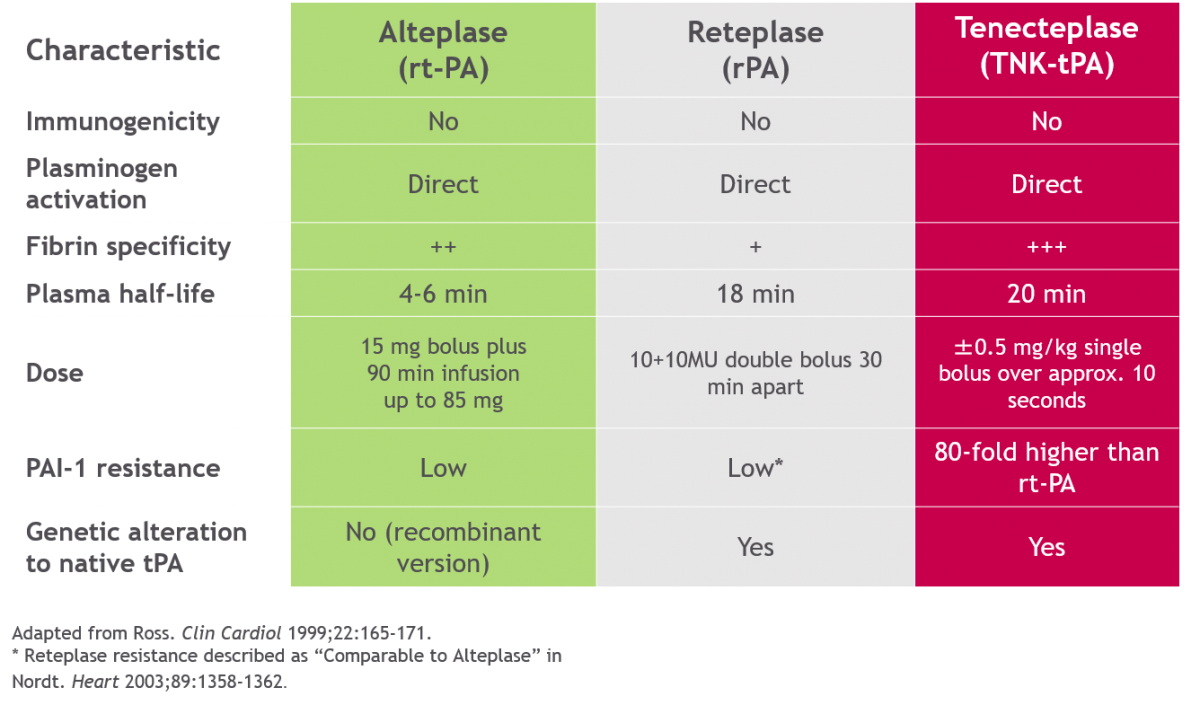Tpa In Cardiac Arrest - According to the 2010 aha guidelines for cardiopulmonary resuscitation and emergency cardiovascular care , “ongoing cpr is not an absolute contraindication for fibrinolysis.” Web the updated 2020 aha adult advanced life support recommendations suggest the administration of thrombolytic therapy for cardiac arrest when pe is the suspected cause, which is unchanged from 2015. Web adults have been successfully resuscitated following administration of fibrinolytics (tpa) after initial failure of standard cpr techniques, particularly when the condition leading to the arrest was acute pulmonary embolism or other presumed cardiac cause (loe 3 89; Or maybe you don't believe in thrombolytics, but are totally down with fibrinolytics during arrest. Web do you administer thrombolytics during cardiac arrest? Who do you administer them to and which one do you use? Web coronary thrombosis and pulmonary thromboembolism are common causes of cardiac arrest. I give you my own circuitous ramblings on the topic in this episode.
Who do you administer them to and which one do you use? Or maybe you don't believe in thrombolytics, but are totally down with fibrinolytics during arrest. Web do you administer thrombolytics during cardiac arrest? I give you my own circuitous ramblings on the topic in this episode. Web coronary thrombosis and pulmonary thromboembolism are common causes of cardiac arrest. Web the updated 2020 aha adult advanced life support recommendations suggest the administration of thrombolytic therapy for cardiac arrest when pe is the suspected cause, which is unchanged from 2015. Web adults have been successfully resuscitated following administration of fibrinolytics (tpa) after initial failure of standard cpr techniques, particularly when the condition leading to the arrest was acute pulmonary embolism or other presumed cardiac cause (loe 3 89; According to the 2010 aha guidelines for cardiopulmonary resuscitation and emergency cardiovascular care , “ongoing cpr is not an absolute contraindication for fibrinolysis.”
Web coronary thrombosis and pulmonary thromboembolism are common causes of cardiac arrest. I give you my own circuitous ramblings on the topic in this episode. According to the 2010 aha guidelines for cardiopulmonary resuscitation and emergency cardiovascular care , “ongoing cpr is not an absolute contraindication for fibrinolysis.” Or maybe you don't believe in thrombolytics, but are totally down with fibrinolytics during arrest. Who do you administer them to and which one do you use? Web do you administer thrombolytics during cardiac arrest? Web adults have been successfully resuscitated following administration of fibrinolytics (tpa) after initial failure of standard cpr techniques, particularly when the condition leading to the arrest was acute pulmonary embolism or other presumed cardiac cause (loe 3 89; Web the updated 2020 aha adult advanced life support recommendations suggest the administration of thrombolytic therapy for cardiac arrest when pe is the suspected cause, which is unchanged from 2015.
PPT Intraarterial thrombolytic treatment PowerPoint Presentation
Web the updated 2020 aha adult advanced life support recommendations suggest the administration of thrombolytic therapy for cardiac arrest when pe is the suspected cause, which is unchanged from 2015. Web adults have been successfully resuscitated following administration of fibrinolytics (tpa) after initial failure of standard cpr techniques, particularly when the condition leading to the arrest was acute pulmonary embolism.
Some reasons to consider tpa in cardiac arrest YouTube
Web coronary thrombosis and pulmonary thromboembolism are common causes of cardiac arrest. Web adults have been successfully resuscitated following administration of fibrinolytics (tpa) after initial failure of standard cpr techniques, particularly when the condition leading to the arrest was acute pulmonary embolism or other presumed cardiac cause (loe 3 89; Who do you administer them to and which one do.
Acls Guidelines 2018 Pdf Download Damien Purdon
Or maybe you don't believe in thrombolytics, but are totally down with fibrinolytics during arrest. According to the 2010 aha guidelines for cardiopulmonary resuscitation and emergency cardiovascular care , “ongoing cpr is not an absolute contraindication for fibrinolysis.” Web coronary thrombosis and pulmonary thromboembolism are common causes of cardiac arrest. Who do you administer them to and which one do.
Images in Cardiac Arrest — TPA
Who do you administer them to and which one do you use? Web adults have been successfully resuscitated following administration of fibrinolytics (tpa) after initial failure of standard cpr techniques, particularly when the condition leading to the arrest was acute pulmonary embolism or other presumed cardiac cause (loe 3 89; Or maybe you don't believe in thrombolytics, but are totally.
Thrombolytics for PE in Cardiac Arrest CriticalCareNow
Or maybe you don't believe in thrombolytics, but are totally down with fibrinolytics during arrest. Web adults have been successfully resuscitated following administration of fibrinolytics (tpa) after initial failure of standard cpr techniques, particularly when the condition leading to the arrest was acute pulmonary embolism or other presumed cardiac cause (loe 3 89; I give you my own circuitous ramblings.
Heart Attack or Cardiac Arrest? in 2020 Nursing school notes
Web coronary thrombosis and pulmonary thromboembolism are common causes of cardiac arrest. Or maybe you don't believe in thrombolytics, but are totally down with fibrinolytics during arrest. Web do you administer thrombolytics during cardiac arrest? I give you my own circuitous ramblings on the topic in this episode. According to the 2010 aha guidelines for cardiopulmonary resuscitation and emergency cardiovascular.
Half Dose Alteplase For Sub Massive Pulmonary Embolism Directed By My
Who do you administer them to and which one do you use? Web adults have been successfully resuscitated following administration of fibrinolytics (tpa) after initial failure of standard cpr techniques, particularly when the condition leading to the arrest was acute pulmonary embolism or other presumed cardiac cause (loe 3 89; According to the 2010 aha guidelines for cardiopulmonary resuscitation and.
Clinical Controversy TPA Use in Cardiac Arrest Cardiac Arrest
Web the updated 2020 aha adult advanced life support recommendations suggest the administration of thrombolytic therapy for cardiac arrest when pe is the suspected cause, which is unchanged from 2015. According to the 2010 aha guidelines for cardiopulmonary resuscitation and emergency cardiovascular care , “ongoing cpr is not an absolute contraindication for fibrinolysis.” Web adults have been successfully resuscitated following.
Fibrinolytic Drugs STROKE MANUAL
Or maybe you don't believe in thrombolytics, but are totally down with fibrinolytics during arrest. Who do you administer them to and which one do you use? Web do you administer thrombolytics during cardiac arrest? I give you my own circuitous ramblings on the topic in this episode. Web adults have been successfully resuscitated following administration of fibrinolytics (tpa) after.
Prospective Observational Cohort Study of Tenecteplase Versus Alteplase
Web do you administer thrombolytics during cardiac arrest? According to the 2010 aha guidelines for cardiopulmonary resuscitation and emergency cardiovascular care , “ongoing cpr is not an absolute contraindication for fibrinolysis.” Web the updated 2020 aha adult advanced life support recommendations suggest the administration of thrombolytic therapy for cardiac arrest when pe is the suspected cause, which is unchanged from.
Web The Updated 2020 Aha Adult Advanced Life Support Recommendations Suggest The Administration Of Thrombolytic Therapy For Cardiac Arrest When Pe Is The Suspected Cause, Which Is Unchanged From 2015.
Who do you administer them to and which one do you use? Web do you administer thrombolytics during cardiac arrest? Web adults have been successfully resuscitated following administration of fibrinolytics (tpa) after initial failure of standard cpr techniques, particularly when the condition leading to the arrest was acute pulmonary embolism or other presumed cardiac cause (loe 3 89; Or maybe you don't believe in thrombolytics, but are totally down with fibrinolytics during arrest.
According To The 2010 Aha Guidelines For Cardiopulmonary Resuscitation And Emergency Cardiovascular Care , “Ongoing Cpr Is Not An Absolute Contraindication For Fibrinolysis.”
I give you my own circuitous ramblings on the topic in this episode. Web coronary thrombosis and pulmonary thromboembolism are common causes of cardiac arrest.









